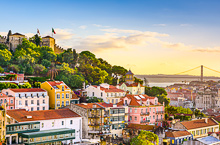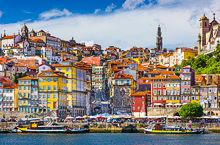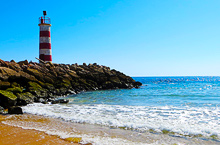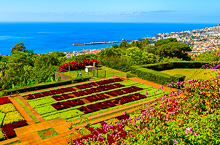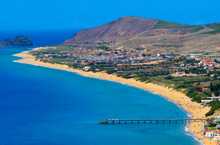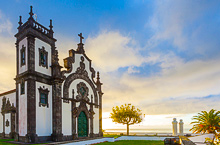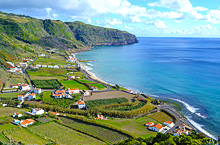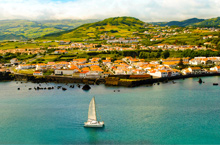Airlines
Our Airports
Our 10 airports are developed and designed in order to create a unique experience for visitors, so we invest in a variety of facilities and infrastructures such as shops, restaurants and entertainment areas.
Passenger traffic grew by 4.3 per cent in 2024, with statistics rising from 66.3 million in 2023 to 69.2 million passengers in 2024.
Our goal is continuous expansion of our infrastructures, with regard to service innovation, and investing increasingly in a greater experience for our partners and travellers. This way, we are always ready to explore new business opportunities for the airlines.
|
Top 5 Airlines |
Top 5 Markets |
|
Tap Portugal |
Portugal |
|
Ryanair |
United Kingdom |
|
Easyjet |
France |
|
Azores Airlines |
Spain |
|
Transavia |
Germany |
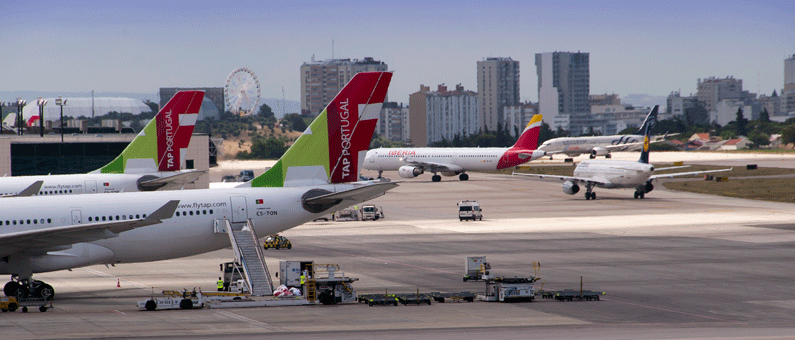
Welcome to Lisbon Airport.
Lisbon, a city waiting to be discovered by you!
Lisbon is Portugal’s capital and certainly one of the most fascinating and picturesque capitals of Europe. Built on 7 hills, has several stunning panoramic views, monuments classified as world heritage and interesting museums.
In a region with roughly 3 million inhabitants, this city provides unforgettable moments and its location in the Western Iberian Peninsula grants easy access to most European capitals and short flight times all across Europe.
Lisbon offers plenty of activities, it has a rich cultural life, beaches, golf, surfing and other water sports and welcomed, in 2023, more than 8.8 million tourists.
In 2024, with an average occupancy rate of 85%, 35.1 million passengers passed through Lisbon Airport, representing an increase of 4.3% over the previous year. Commercial movements were 225,268 (+1.1%) and available seats 41,458,371 (+2.3%).
At present, Lisbon airport has 2 Terminals:
Arrivals Terminal 1 – All airlines.
Departures
Terminal 1 - Aegean Airlines, Aer Lingus, Air Algerie, Air Baltic, Air Canada, Air Europa, Air France, Air Nostrum, Air Serbia, Air Transat, American Airlines, Azores Airlines, Azul Linhas Aereas, Beijing Capital Airlines, British Airways, Brussels Airlines, Bulgaria Air, Delta Airlines, easyJet, Egyptair, El Al, Emirates, Etihad Airways, EuroAtlantic, Finnair, Fly One, Iberia, Iceland Air, Israir Airlines, KLM, Korean Air, LAM, Lufthansa, Luxair, Orbest, Pegasus, Play, Qatar Airways, Royal Air Maroc, SAS Scandinavian, STP Airways, Swiss, TAAG, TACV, TAM, TAP Air Portugal, Tunisair, Turkish Airlines, United, World2fly.
Terminal 2 - Eurowings, Norwegian, Ryanair, Transavia, Volotea, Vueling and Wizz Air.
Lisbon Airport has a free transport service between the two terminals: Shuttle T2.
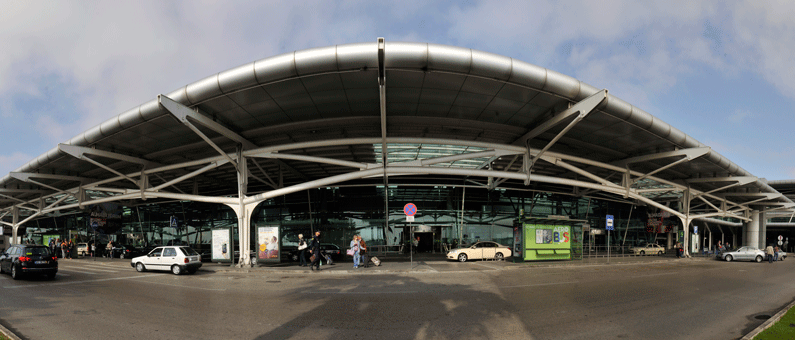
Airport accessibilities
The city of Lisbon is easy to reach, as the airport is located only 7km from the city centre and it offers metro with connections to all the main urban districts, including the Estação do Oriente (Parque das Nações), Lisbon’s central railway station.
At the same time, there are other transport options, such as regular buses and Taxis.
There is a bus to Lisbon airport three times a day for passengers travelling from the Spanish border region of Badajoz. For more information please check www.avanzabus.com.
When using private transport, Lisbon Airport is directly connected to a wide highway network which links the capital to the rest of the country.
Welcome to Porto Airport.
Visit Porto: a city of many charms!
Porto is the second-largest city in the country and due to its historical buildings, and many monuments, it is one of Portugal’s main attractions.
With approximately 1.7 million inhabitants, this is a city of many experiences, which unite strong cultural traditions with moments of leisure. Porto offers a wide range of activities, monuments designed by world renowned architects, wonderful gastronomy and boat tours on the Douro river.
Not only Porto, but also the whole of the north is very popular, due to the four regions which have been classified UNESCO World Heritage sites (Porto, Guimarães, Douro and Foz Côa).It is also the area with the biggest flow of emigration, which makes VFR tourism an important factor for Porto airport.
As the Spanish region of Galiza is very nearby (120 km distance by car), 10% of passengers travelling through Porto Airport are estimated to be of Galician origin.
In 2024, with an average occupancy rate of 88.1%, more than 15.9 million passengers passed through Porto Airport, which represented an increase of 4.8% compared to the previous year. Commercial movements were 104,040 (+2.3%) and available seats 18,100,338 (+2.3%).
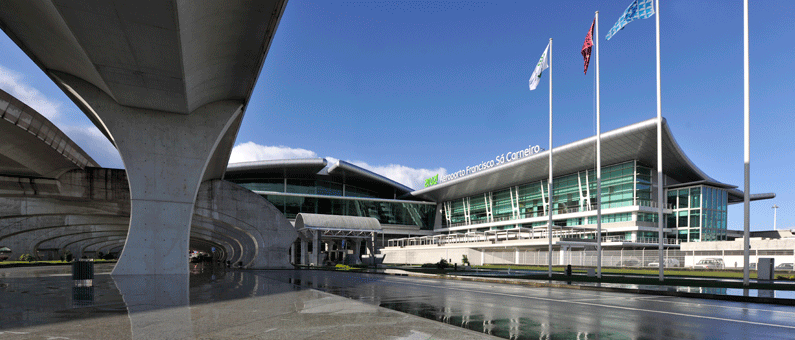
Airport accessibilities
Porto is easily acessible and provides a wide network of public transportation. You can go from the aiport right to the city center by metro (approximately 30 minutes) or by taxi and be directly connect to the country’s central railway network, which includes the historical Douro line trains.
When using private transport, Porto Airport is directly connected to a wide highway network which links the city to the rest of the country.
Welcome to Faro Airport
Faro, the gateway to the Algarve’s fantastic beaches!
The Algarve is a lovely region in the South of Portugal. Well-known for its beautiful beaches and mild temperatures, the Algarve welcomes many visitors throughout the year.
Faro, which has around 60,000 inhabitants, is the centre for tourism and leisure activities in Portugal, and a gateway to the regions of the Algarve and Huela (in Spain).The Algarve region offers a big variety of unique landscapes and activities, such as beaches, award-winning golf courses and unique culinary delights.
Faro Airport is one of the main leisure airports in Portugal, with a record of over 9.8 million passengers in 2024, which represents an increase of 2% over the previous year and an average occupancy rate of 87.5%. Commercial movements reached 63,530 (+1.3%) and available seats 11,296,861 (+1.6%).
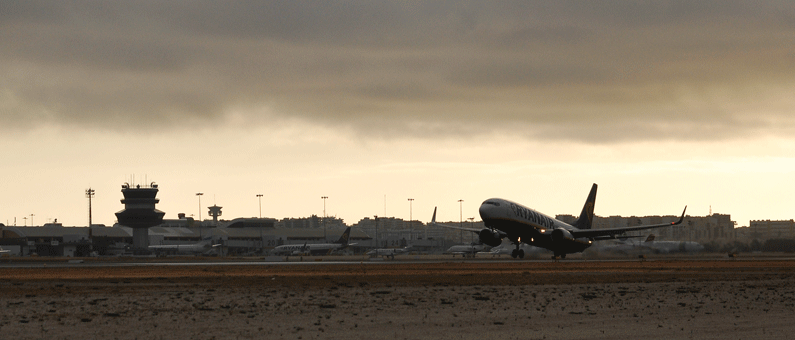
Airport accessibilities
There are several daily bus connections between the airport and the city center – Bus Station. From the Bus Station you can choose between different local and national connections.You can also get taxis or take a train. The railway station, which links Faro to the most important towns in the Algarve, is located about 6 km form the Bus Station.
When using private transport, Faro Airport is directly connected to a wide highway network which links the city of Faro to the rest of the country.
Welcome to Beja Airport.
Alentejo, in the heart of Portugal!
The Alentejo is one of the fastest growing regions in Portugal and is famous for its historical and cultural influence.
With roughly 31,603 km² (33% of continental Portugal) and approximately 760 thousand inhabitants, the Alentejo region offers plenty of leisure activities, culture, adventure and beaches – like the famous Costa Vicentina and Troia. It is also very close to the Alqueva dam, the largest artificial lake in Europe (250 km²), one of the region’s main tourist attractions.
Alentejo Airport is located west of Beja and was inaugurated in April 2011. This terminal for passengers, cargo and aircraft maintenance is prepared to receive all kinds of operations at a high level of efficiency.
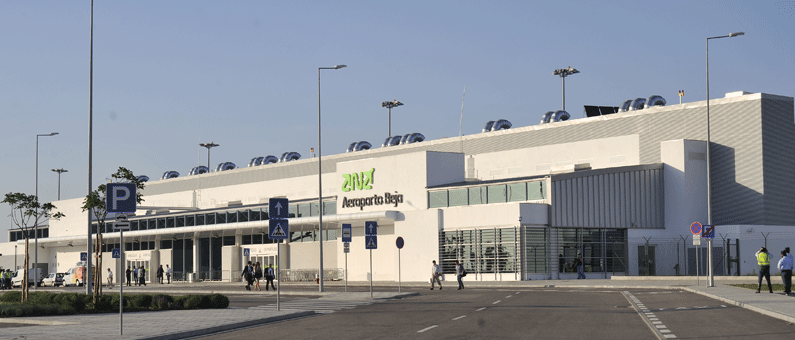
Airport accessibilities
Beja airport, which is located 12 km from Beja, 170 km south of Lisbon and 150 km north of the Algarve, is directly connected to a wide network of highway that link Beja to the rest of the country.
Welcome to the Madeira Airports.
Madeira, a magical destination!
Madeira is an Autonomous Region of Portugal, consisting of 4 islands off the north-west coast of Africa. It is well-known for its subtropical climate, outdoor activities, hiking in the mountains, golf, surfing and diving.Throughout the year there are three tourism highlights: the wonderful New Year’s Eve with its magical fireworks, filling the small island with light and colour, the amazing flower festival and the stunning Carnival.
It is a destination with a long tradition in tourism and the art of hospitality. The islands - Madeira and Porto Santo (also with an airport) are famous for their natural beauty, which makes them perfect holiday destinations.
Madeira Airports are the main entry point to Madeira, having received in 2024 more than 5.1 million passengers (increase of 4.6% compared to 2023) and registered an average occupancy rate of 86.6%. Commercial movements reached 34,547 (+1.4%) and available seats 5,860,228 (+1.8%).
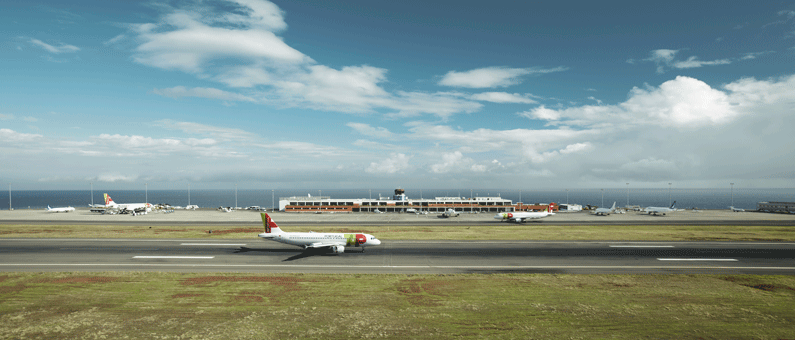
Airport accessibilities
In addition to the direct bus lines, the airport shuttle or taxis, in case of private passenger transport, Funchal airport is directly linked up with the expressway network that connects Funchal with the rest of the Island.
Welcome to Azores Airport.
The Azores, stunning nature waiting to be discovered!
The archipelago of the Azores is composed of nine islands bathed by the North Atlantic.The Eastern group, comprising Santa Maria and São Miguel, the Central Group including Terceira, Graciosa, São Jorge, Pico and Faial, and the Western group made up of Corvo and Flores.
With its unique natural landscape, this is the perfect destination to reach out to nature, walk in the open air and enjoy the countless leisure activities at your fingertips.
With approximately 246,772 inhabitants and an insular territory of 2,325 km², the Azores are 1,600 km from the European continent and 2,454 km from the North American continent (Canada).
In the 4 airports managed by ANA - Ponta Delgada, Horta, Santa Maria and Flores -, about 3.3 million passengers passed in 2024, which represents an increase of 9.6% compared to the previous year. With an occupancy rate of 81.7%, commercial movements reached 37,185 (+5.9%) and available seats 4,976,545 (+7.1%).
Ponta Delgada Airport is the regional hub of the Azores and the main gateway to that same destination.
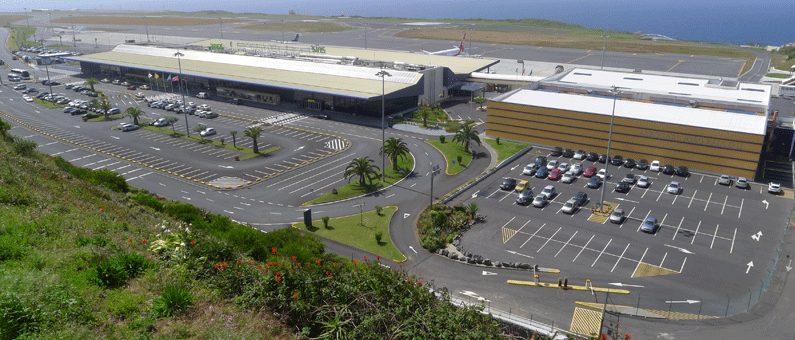
Airport accessibilities
The airport is located less than 3 km from the city center of Ponta Delgada.


